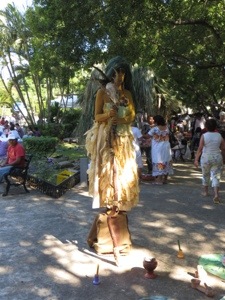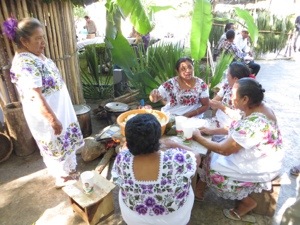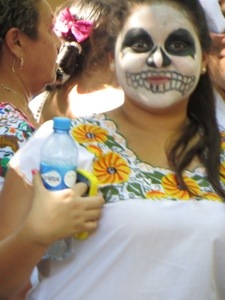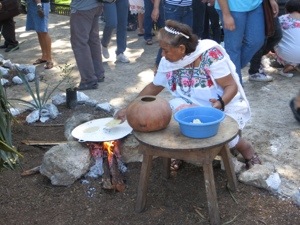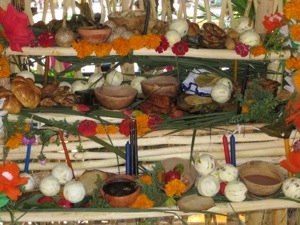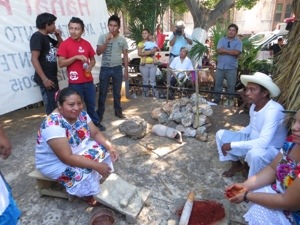When I first met Henry, I was a little taken aback by all the skull-themed objets scattered about his house and his skeleton-print shirt. I soon got used to them and then grew to appreciate them, and now I’m the one with the reproduction skull on my bookshelf. The little people on our wedding cake were a Day of the Dead skeleton bride and groom. Joe (inspired by the tv show Bones) learned all 206 bones in the human body within the space of a couple of weeks. So being here in Mexico for El Dia de los Muertos is right up our creepy dark alley.
Dia de los Muertos, as you may know, is the meaningful Mexican corollary to our commercial Halloween; it’s the day when people remember and honor their loved ones who are deceased, and recognize the continuity of life. People visit cemeteries, where they clean and decorate the graves of their relatives and friends, and enjoy a picnic in the ethereal presence of those they loved.
Here in the Yucatan, the holiday is known by its Mayan name, Hanal Pixán. The sumptuousness of the picnics are raised to Lucullan heights, featuring meats and tamales and candied fruit and all manner of fresh fruits and vegetables and flowers, and an egg bread known, not surprisingly, as pan de muerto. Each village in the state has its own traditional ways of celebrating, and we were lucky enough to be here on October 31, when the Grand Plaza in front of the ancient cathedral was alive with exhibitions displaying each village’s tradition.
The day before the exhibition, participants started building palapas (huts made of wood and brush and palm leaves) in the square. Most of them were constructed by tying the poles together, so we got some good ideas for next year’s sukkah.
We arrived early the following morning and things were already hopping. Palapa after palapa was filled with shrines bedecked with flowers and food and objects of desire such as bottles of Coca Cola and tequila. Some had little hearths and wells, and featured ladies making fresh tortillas. Many of the men were dressed traditionally in Mérida white trousers and guayaberas (Cuban-style shirts), and while it’s a snappy look, it pales next to the women’s huipils, the colorful, densely embroidered Mayan dresses with lace underskirts. Beautiful.
Some people were dressed in costumes like this deliciously freaky corn demon. There were many faces with skeleton make-up. And there were a lot of locals snapping pictures of it all, so I didn’t feel like a nosy tourist with a camera.
